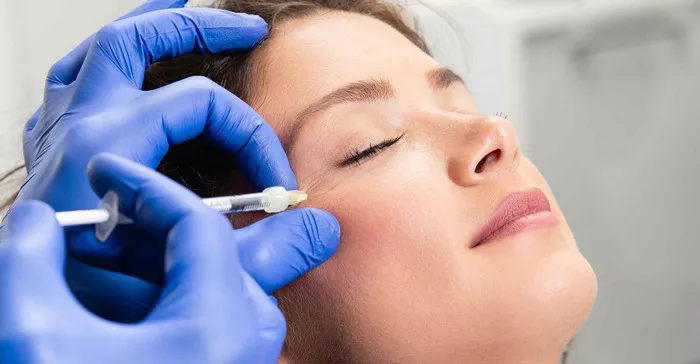Facial fillers are a popular choice for those seeking to reduce the signs of aging, enhance facial contours, and restore volume to the skin. This non-surgical option offers immediate results with minimal downtime. However, one of the most common questions patients ask is, “How long will facial fillers last?” The longevity of facial fillers can vary significantly based on several factors. This article will explore the types of fillers available, factors affecting their duration, and tips for maintaining results.
Types of Facial Fillers
Hyaluronic Acid Fillers
Hyaluronic acid (HA) fillers are among the most widely used dermal fillers. They are favored for their ability to provide natural-looking results and their versatility in treating various facial areas.
Common HA Fillers
Juvederm
Restylane
Belotero
Duration
HA fillers typically last between 6 to 18 months. The specific duration depends on the product used and the area treated. For instance, fillers in areas with less movement, such as the cheeks, tend to last longer than those in more dynamic areas, like the lips.
See Also: The 5 Best Non-Invasive Face Lift Procedures
Calcium Hydroxylapatite Fillers
Calcium hydroxylapatite (CaHA) is a mineral-like compound naturally found in human bones. These fillers are thicker and are used for deeper lines and wrinkles.
Common CaHA Fillers
Radiesse
Duration
CaHA fillers generally last about 12 to 18 months. They are known for providing immediate volume and stimulating collagen production, which can extend the results.
Poly-L-Lactic Acid Fillers
Poly-L-lactic acid (PLLA) is a biodegradable synthetic substance used in facial fillers. Unlike other fillers, PLLA works by stimulating the body’s own collagen production.
Common PLLA Fillers
Sculptra Aesthetic
Duration
PLLA fillers can last up to 2 years. However, since they stimulate collagen growth, the results appear gradually over a few months.
Polymethyl Methacrylate Fillers
Polymethyl methacrylate (PMMA) is a biocompatible synthetic substance. PMMA fillers contain collagen and are used for deeper wrinkles and folds.
Common PMMA Fillers
Bellafill
Duration
PMMA fillers are considered semi-permanent, lasting up to 5 years. They provide long-lasting support to the skin structure.
Fat Injections
Fat injections, or autologous fat transfer, involve harvesting fat from the patient’s body, purifying it, and injecting it into the face.
Duration
Results from fat injections can last several years. However, not all the transferred fat survives, and additional sessions may be needed to achieve the desired results.
Factors Affecting the Duration of Facial Fillers
Metabolism
Each person’s metabolism affects how quickly their body breaks down the filler. Individuals with a faster metabolism may find that their fillers don’t last as long.
Area Treated
The area of the face treated can influence how long fillers last. Areas with more movement, such as the lips and mouth, tend to break down fillers faster than areas like the cheeks.
Type of Filler
Different types of fillers have varying longevity. For example, HA fillers generally last less than CaHA fillers, and PMMA fillers last the longest.
Filler Density and Viscosity
Thicker and more viscous fillers tend to last longer than thinner ones. The choice of filler density depends on the area being treated and the desired outcome.
Patient’s Age and Skin Condition
Younger patients with healthier skin may experience longer-lasting results. Older patients or those with more skin damage might need more frequent touch-ups.
Injection Technique
The skill and technique of the injector play a significant role in the longevity of fillers. Experienced injectors know the precise depths and amounts to use, optimizing the results and duration.
Lifestyle Factors
Certain lifestyle choices can impact how long fillers last. Factors such as smoking, excessive sun exposure, and poor skincare can shorten the lifespan of fillers.
Tips for Maintaining Results
Follow Post-Treatment Instructions
Adhering to post-treatment care instructions provided by your injector can significantly impact the longevity of your fillers.
Regular Touch-Ups
Scheduling regular touch-ups can help maintain the desired results and prevent the fillers from fully wearing off before the next session.
Healthy Lifestyle
Maintaining a healthy lifestyle with a balanced diet, regular exercise, and proper hydration can enhance the longevity of your fillers.
Sun Protection
Protecting your skin from the sun by using sunscreen and wearing protective clothing can prevent premature breakdown of fillers.
Good Skincare Routine
A consistent skincare routine with high-quality products can help maintain the skin’s health and the effects of fillers.
Conclusion
The duration of facial fillers can vary based on several factors, including the type of filler, the area treated, and individual lifestyle choices. While HA fillers typically last between 6 to 18 months, other fillers like CaHA, PLLA, and PMMA can offer longer-lasting results. Understanding these factors can help patients make informed decisions about their filler treatments and expectations.
Regular consultations with a qualified injector and adherence to post-treatment care can maximize the benefits and longevity of facial fillers. Whether seeking subtle enhancements or more significant rejuvenation, facial fillers offer a versatile and effective option for maintaining a youthful appearance.
Related topics:

